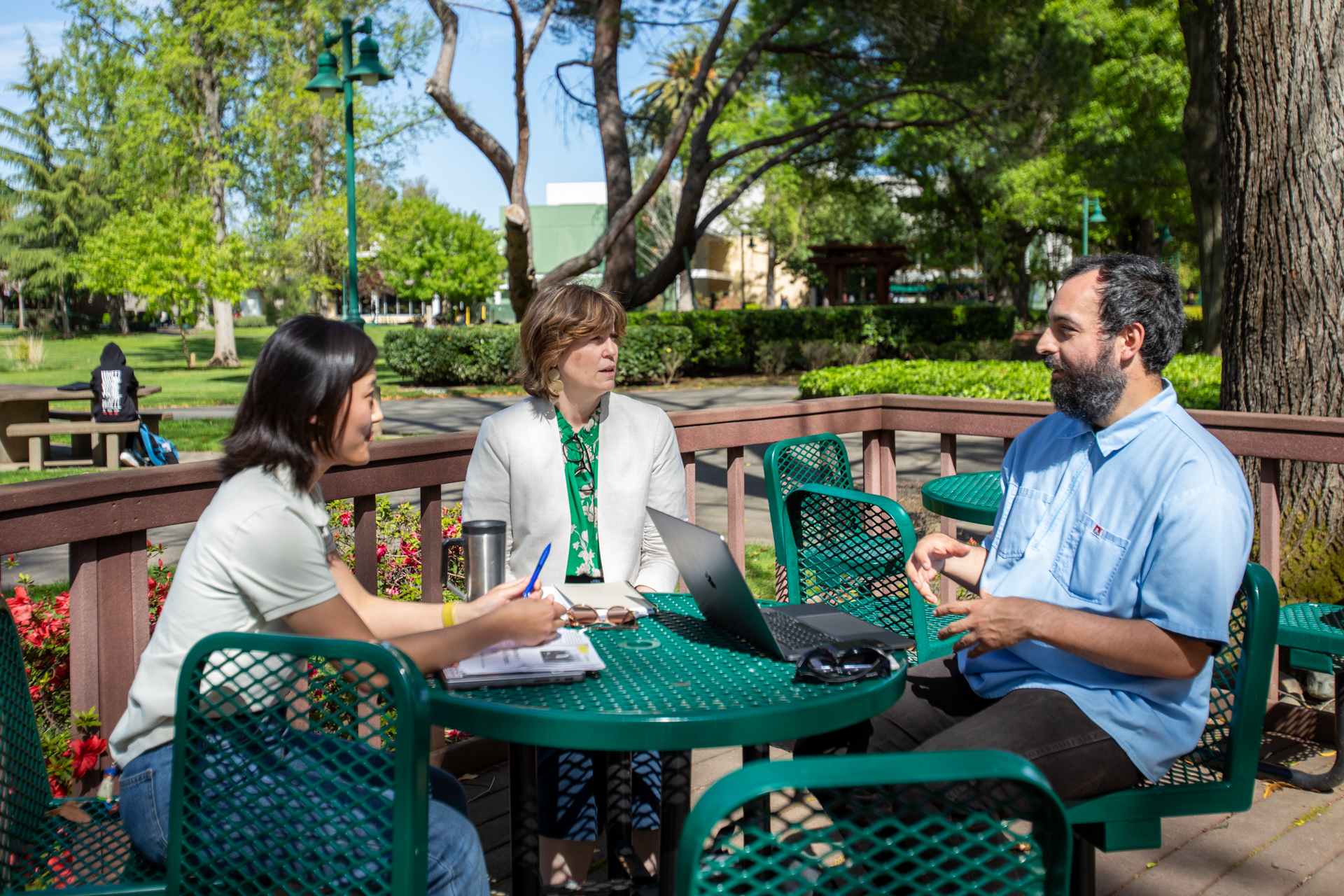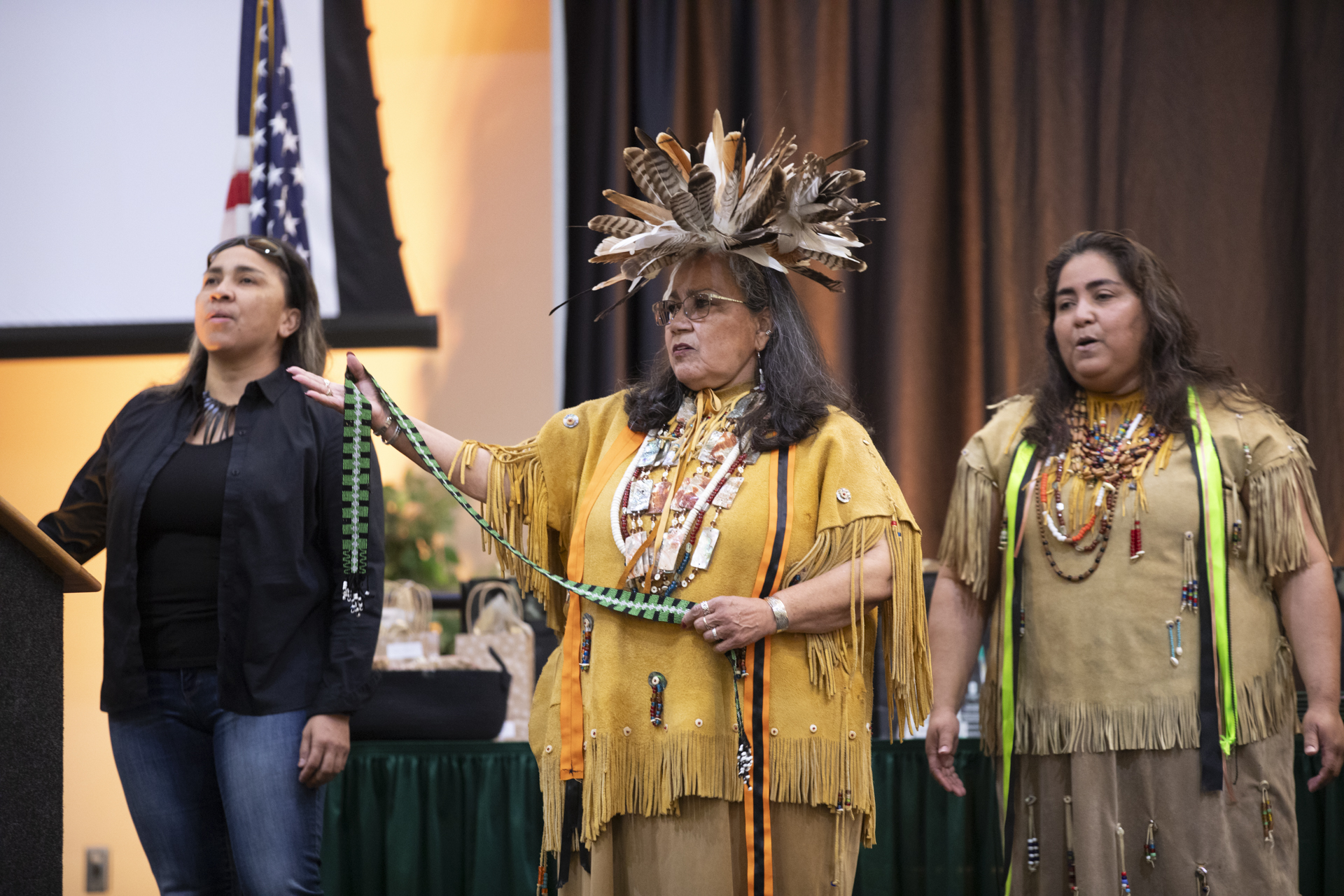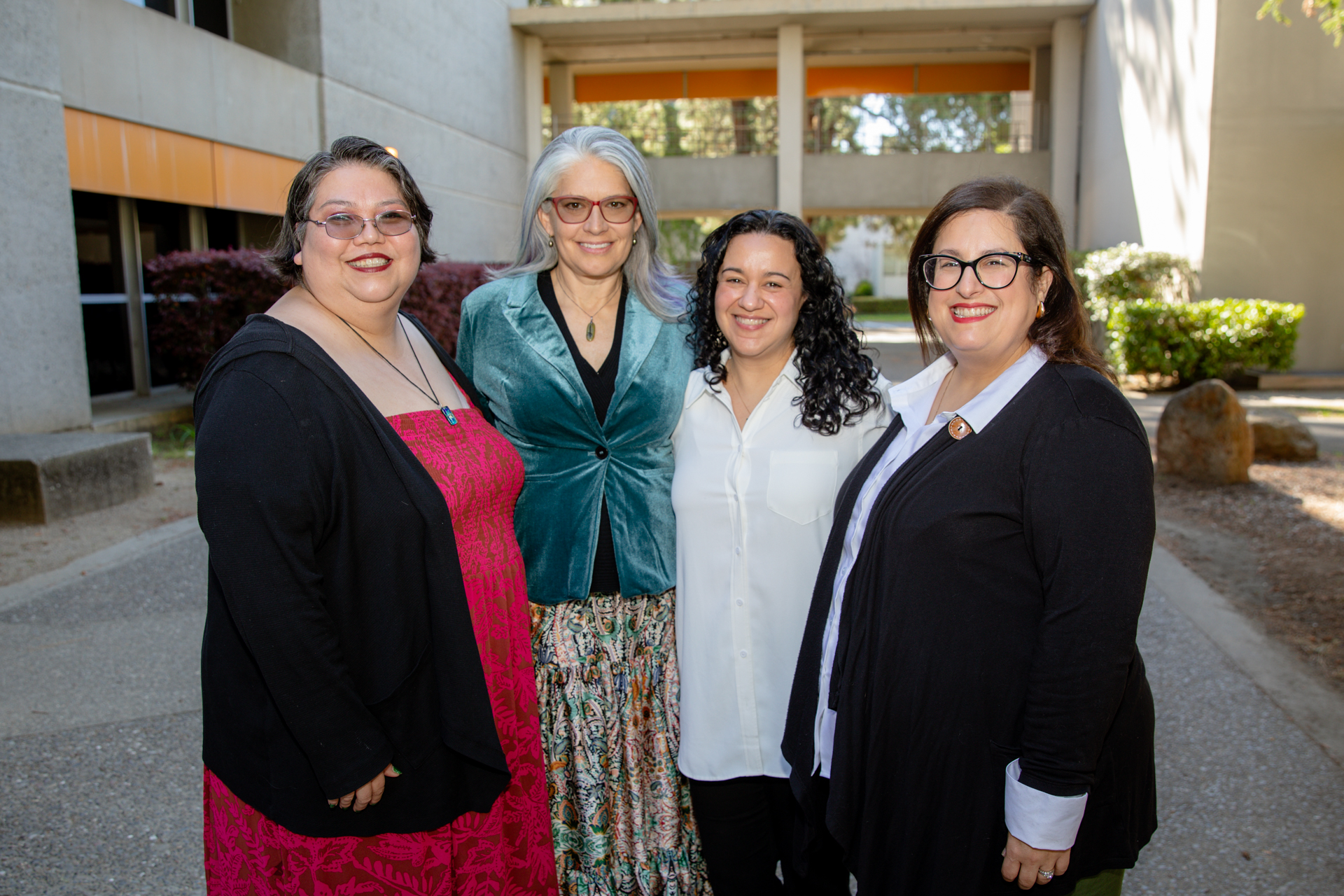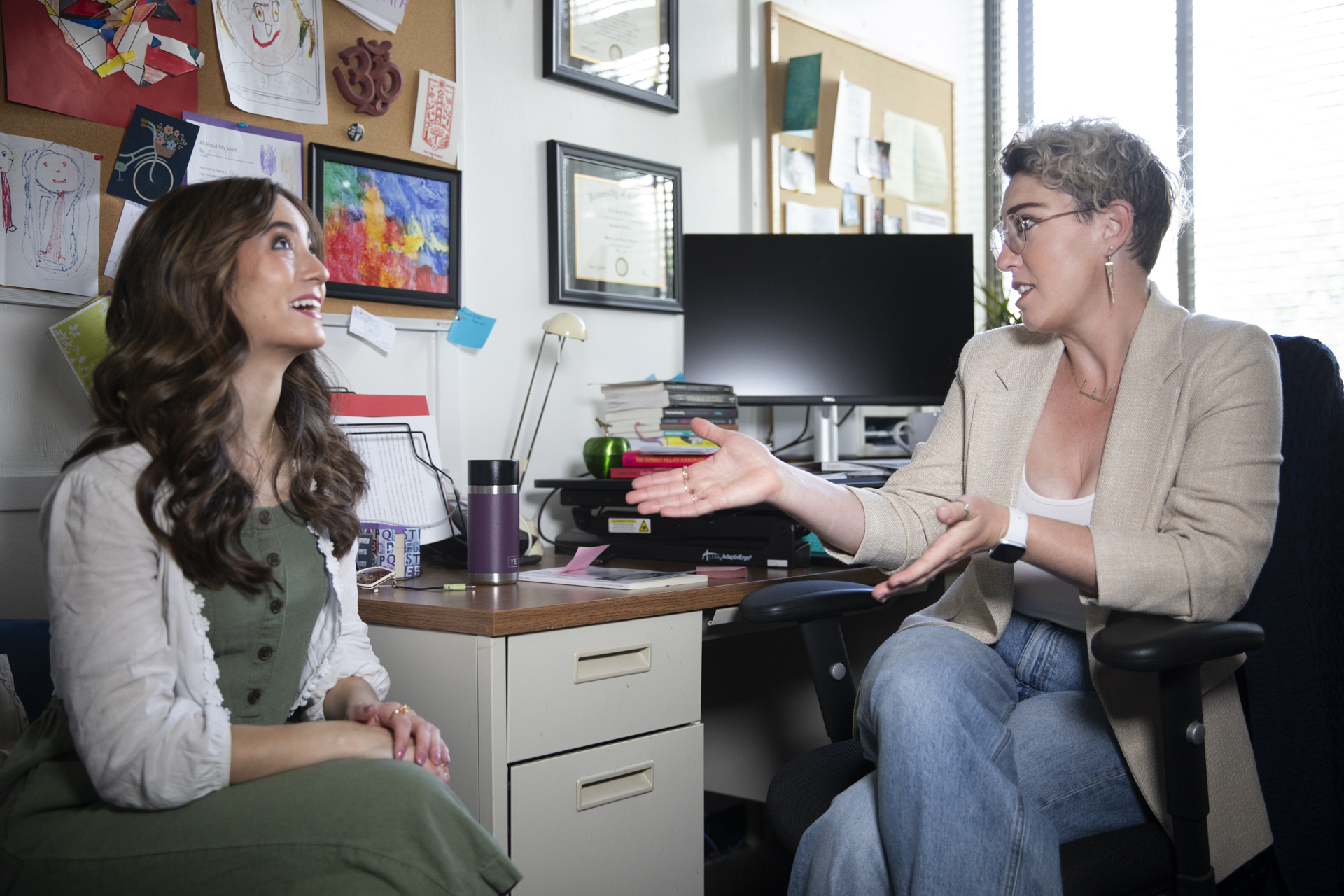Story Content
New faculty group collaborates on implementing social practice in arts and humanities

April 10, 2024
The values are deeply embedded into Sacramento State’s mission: Serve the community. Break down barriers. Promote equity.
Faculty across campus already live out those values every day, but this academic year the College of Arts and Letters has doubled down, recruiting and hiring five new faculty members whose backgrounds are related to the concept of “social practice.”
The so-called cluster hire speaks to many of the college’s priorities, including a commitment to diversity, equity, inclusion and justice, Dean of Arts and Letters Sheree Meyer said.
“We wanted to encourage these new faculty members to create curricula and community projects that focus on working with and in the community,” Meyer said. “We also wanted social practice to be the means by which faculty collaborate with each other regardless of their specific artistic medium or practice.”
“A cluster hire provides faculty members with a ready-made affinity group of like-minded colleagues who can find support and opportunities within their cluster that helps empower them and the students they teach to enact their socially engaged practices." -- Sheree Meyer, dean of Arts and Letters
The five faculty members are Assistant Professor of Art Rey Jeong, Assistant Professor of Communication Studies Rodrigo Ojeda-Beck, Assistant Professor of Design Studies Marcy Wacker, Assistant Professor of Art Adero Willard, and Assistant Professor of Theatre Darius Williams. Now in their second semester on campus, they have been finding their footing as new faculty and are exploring how to implement social practice lessons and activities into their coursework.
The definition of social practice can be a bit nebulous, but Meyer and the new faculty agree that it relates to promoting equity and inclusion by involving the community in their work.
“A cluster hire provides faculty members with a ready-made affinity group of like-minded colleagues who can find support and opportunities within their cluster that helps empower them and the students they teach to enact their socially engaged practices,” Meyer said.
The new faculty often were engaged in social practice work long before they even realized it was a concept. Regardless of how they came to it, however, their common goal manifests in many ways across their varied academic and artistic fields.
For Jeong, social practice means working with people as a medium for her art. It’s collaborative and communicative, she said, and strives to work not for the community but with the community.
“Artists have power, and they have vision,” she said, “How can I leverage my power, not to direct my vision, but to encourage people to envision their ideas onto my structure as a scaffolding?”
At last fall’s U-Nite event at the Crocker Art Museum, Jeong led a prayer circle where people of different faith traditions whispered prayers into a tape recorder. She has assigned her students to remake classic childhood stories or board games, using those students’ perspectives to challenge stereotypes and create something new.
“(Students) need to think about the impact they're creating,” Jeong said. “(I’m) not only asking my students to think about how to be an artist, but how to be a responsible citizen artist, because they're influencing other people with their work."
Ojeda-Beck takes a similar approach to his documentary filmmaking, often waiting until he’s already begun filming and interviewing locals before deciding what the story will be. That shifts the film’s perspective from that of an outsider to the community members’.
The unorthodox style, initially adopted so Ojeda-Beck could operate on a low budget, is one he shares with students as an example of alternative filmmaking they can employ in their careers.
"I'm trying to show students that low production is possible,” he said. “Not having a lot of money presents challenges, but there's a lot of rich traditions to work from that really make that a strength. Seeing the beauty and uniqueness of one's own experience and community, that's something I try and stress a lot."
“Artists have power, and they have vision. How can I leverage my power, not to direct my vision, but to encourage people to envision their ideas onto my structure as a scaffolding? -- Rey Jeong, assistant professor of Art
Wacker had worked as a graphic designer for more than two decades when she decided she wanted to teach and earned her master’s degree at UC Davis. Over the course of her professional and academic career, she noticed the design industry, despite years of professed commitment to diversity, was still predominantly white, male and based on Western values and perspectives.
She has focused her teaching on diversifying the field, such as by asking students to research designs utilized by grassroots organizations such as the Black Panther party that challenge entrenched ideas of “good design.”
“If students don't see themselves in the examples you're using in the classroom, they don’t really know where they fit,” Wacker said. “You really are saying, without saying, they don't fit. I want to explore how we can teach design through a richer variety of cultural lenses and influences.”
The five faculty meet at least monthly to share ideas and discuss potential collaborations. They have some funding and some space to work, but Jeong said there are no specific expectations for their first year. Ideas they have discussed have included forming a small book club among themselves or documenting their journey together so others can replicate their processes. Jeong also hopes to host a social practice conference to better familiarize others with the concept.
In addition, being able to connect regularly and more closely with like-minded colleagues has eased the transition onto campus.
“I feel very fortunate to be working with the people I'm working with,” Ojeda-Beck said. “They’ve just been very thoughtful and nice. Being new to the University, it's nice to feel like you have people around you and (to create) that sense of community within our own space.”
Media Resources
Faculty/Staff Resources
Looking for a Faculty Expert?
Contact University Communications
(916) 217-8366
communications@csus.edu


